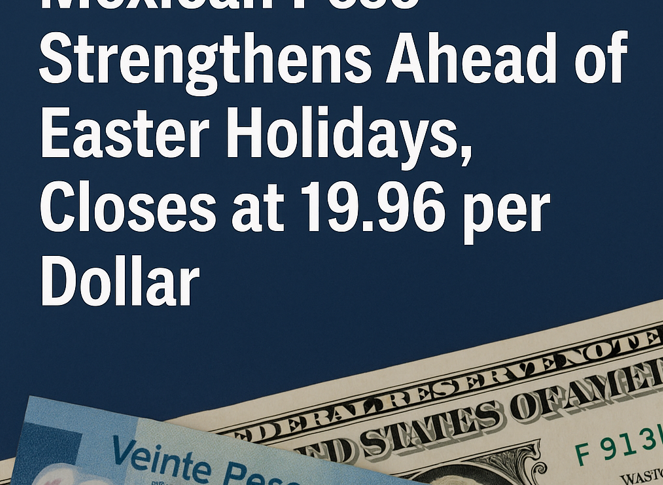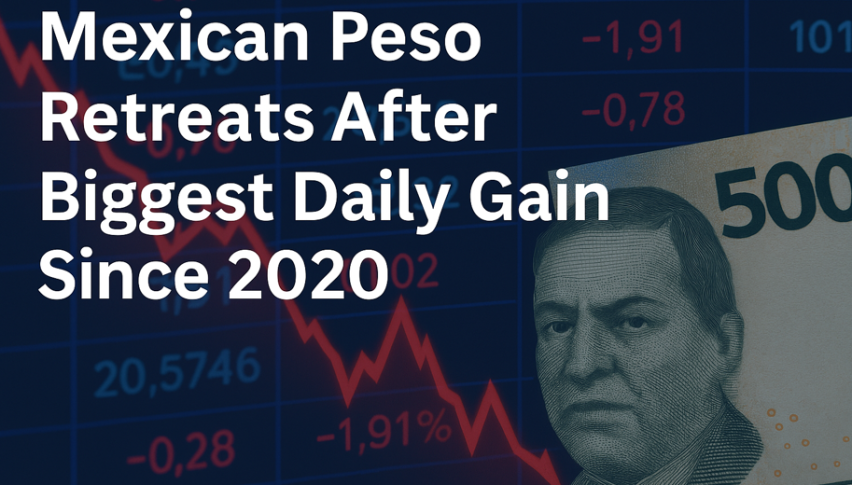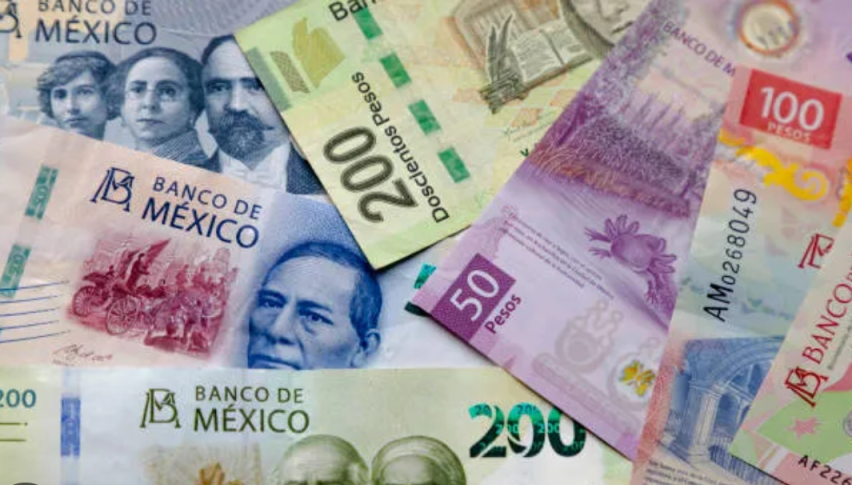Mexican Peso Gains on Weaker Dollar, Closes at 19.96
Despite positive U.S. retail sales data, the dollar remained under pressure throughout the day, touching multi-year lows amid uncertainty.

Quick overview
- The Mexican peso appreciated against the U.S. dollar, closing at 19.9622 pesos per dollar, a gain of 0.80%.
- This appreciation was driven by a weaker dollar and stronger-than-expected economic data from China, which grew 5.4% in the first quarter.
- Despite positive U.S. retail sales data, the dollar faced pressure due to new tariff threats from President Trump and ongoing economic uncertainties.
- Federal Reserve Chair Jerome Powell indicated that the Fed is cautious about making policy changes until the economic impact of tariffs becomes clearer.
The Mexican peso appreciated against the U.S. dollar on Wednesday, buoyed by a weaker greenback and stronger-than-expected economic data from China, just ahead of the Easter holiday period, which typically sees reduced market activity.

The exchange rate closed the session at 19.9622 pesos per dollar, according to official figures from the Bank of Mexico (Banxico), marking a gain of 16.13 centavos or 0.80% compared to Tuesday’s close of 20.1235.
During the day, the dollar traded within a range of 20.1361 to 19.9555 pesos. The U.S. Dollar Index (DXY), which measures the dollar’s performance against a basket of six major currencies, fell 0.82% to 99.34 points by the end of the session.
Despite positive U.S. retail sales data, the dollar remained under pressure throughout the day, touching multi-year lows amid persistent uncertainty.
Boost from China and a Weaker Dollar
China’s economy provided a surprise upside by growing 5.4% in the first quarter, exceeding the consensus estimate of 5.1%. The stronger performance reflected sustained momentum from late 2024, supported by significant government stimulus measures.
This encouraging data gave emerging market currencies like the peso a lift, especially as the dollar continued to weaken amid concerns surrounding new tariffs imposed by U.S. President Donald Trump on Chinese goods.
The dollar’s decline and the boost from China’s economic figures overshadowed positive data from the United States, where retail sales rose by 1.4% in March, slightly above the 1.3% expected by analysts.
Further pressuring the dollar, Trump announced a new investigation into potential tariffs on critical minerals and maintained threats against sectors including pharmaceuticals, copper, and semiconductors.
Powell’s Speech
Markets were also digesting comments from Federal Reserve Chair Jerome Powell, who stated that the Fed is well-positioned to wait for greater clarity on the economic impact of the tariffs before making any monetary policy adjustments.
Powell acknowledged signs of a slowdown in the world’s largest economy, with consumer spending growing modestly and a surge in imports ahead of the tariffs likely to weigh on future growth estimates.
- Check out our free forex signals
- Follow the top economic events on FX Leaders economic calendar
- Trade better, discover more Forex Trading Strategies
- Open a FREE Trading Account



